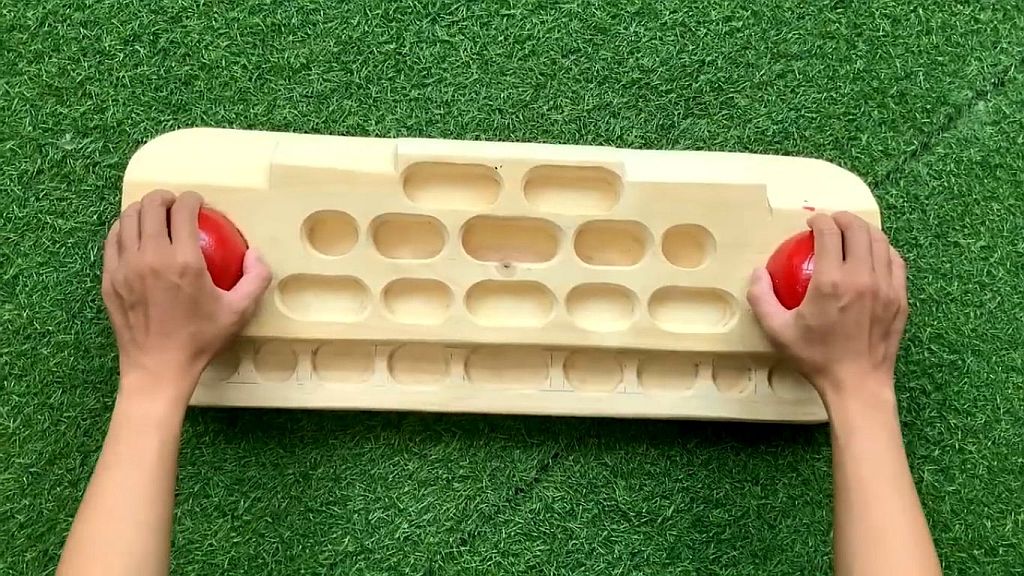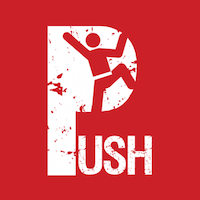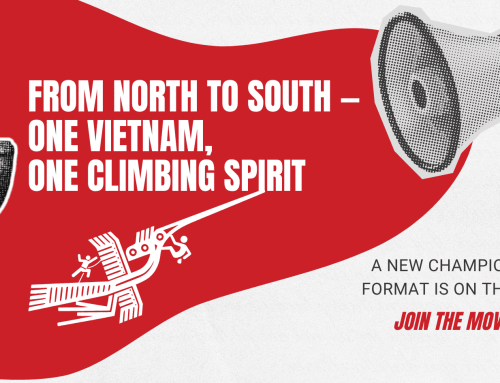Hangboards, like the Hanoi Hangboard featured here, are the go-to weapon of choice for those looking to boost their upper body strength but if you’re new to them don’t go thinking that this is basically a pull up bar for climbers.
Fingers First
The first key thing to bear in mind is that while a hangboard is an all over upper body strengthening tool, it is specifically about finger and grip strength, not cranking out pull ups to boost biceps. Sure it works those big muscles in the arms and backs but at the heart of it is the finger tip grip and that changes everything. You can expect muscle development in a few weeks of occasional exercise but the connecting tissues of fingers are much slower to build and take patience and respect before performance results really show. So to get the most from a hangboard you need a certain amount of dedication and that usually means creating a routine for your workout.
A Word of Warning
Hangboards are a great way of developing strength relatively fast. They’re also a great way to hurt yourself by overdoing it before you’re ready.
Hopefully the fact that you’re reading this means you’re taking a smart approach to the hang but be realistic about your strength levels and be prepared to build up gently. Some moves, such as trying to do pull ups from very small holds, are a famously fast path to pain. Any time you lose by taking it gently it will almost certainly be less than the time you lose by injuring yourself through over-eagerness.

Positioning
If you’re using the hangboard at Push then fine. But if you have got your own then think whether it’s in the right place. There are too many hangboards fixed over stairwells, or in the path of opening doors which is more likely to lead to slapstick than strength gains. Give a bit of thought to ventilation too. A fan is your friend even for short workouts and you will want to make sure you can see your watch or stopwatch as you workout so you can reassure yourself that yes, you are making progress.
Warm-up
Yes you should warm up – even if you’re planning on a static session of dead hangs where you don’t even plan on moving. Skipping, pull ups, stretching and yoga moves for arms and fingers are all popular for warming up. Boards often include gentle jugs and slopers which are a great way to warm up before you start going for more demanding crimps and pinches.

Dead Hang Workout
There are lots of variations of workouts, some of which we’ll be covering in Part 2. But for now if you’re new to the game then don’t worry about lifting your bodyweight, let along loading up with extra weights. We’ll start with the one of the simplest, and most efficient ways to build strength; the dead hang.
Dead hang is the foundation of contact strength and the longer you can hold a hang the more time and options you have for finding footholds on the face. Here however there are no footholds and the temptation is to let your body drop into the hang with your arms straight and your skeleton providing the support.
Try not to do that. Try instead to engage your arms and back as you hang by keeping your elbows slightly bent and use your core to stabilise. Swinging may have been fun when you were six but for strength training we’re looking for complete stillness.
There are lots of different grips to use on a hangboard but if you’re a beginner then start with a nice open grip using all four fingers. There’s time to play with smaller grips, offset asymmetrical pull ups, and hanging by a single fingernail later. Right now we just want to hang right.
First thing to do is gauge your strength. Hanging with good posture (slightly bent arms, back muscles engaged) for only a few seconds is still better than dangling longer but looking like a rag doll.
You may find that hanging for anything more than a few seconds is tougher than you thought. Don’t worry. This is where a watch or timer become important because instead of feeling defeated you should note down that first hang and take it as the starting point to beat. If, on the other hand, you can hang for over fifteen seconds you’re doing well and it may be time to try a smaller grip to up the ante on yourself.

Hang Sets
Hang for ten to fifteen seconds, then take a minute break and shake your arms out. Then repeat. Then repeat the process again aiming for three to four holds. Grab some water, swear a little, then do that again – aiming for four sets of four holds.
Moving on
Everyone’s an expert when it comes to strength training but the general feeling is that progress isn’t about building up to longer and longer hangs. Instead as you start to reach four sets of four holds it’s time to start looking at harder grips you can’t hold that long. Don’t forget there’s more than one grip position to work on here; a hangboard should offer wide pinches, medium pinches, small edges, large edges, a variety of finger pockets and probably a warm up jug or sloper. Note down not only how long you hang, but what grip you use and mix it up. Keeping a record is key to maintaining motivation when things just ain’t hanging like they should.
Hang on in there and we’ll be back with more on hangboarding and campus boarding just as soon as our arms stop hurting. In the meantime check out our Hanoi Hangboards review, and maybe pick one up for yourself while you at it.
Words by Steve Shipside.



